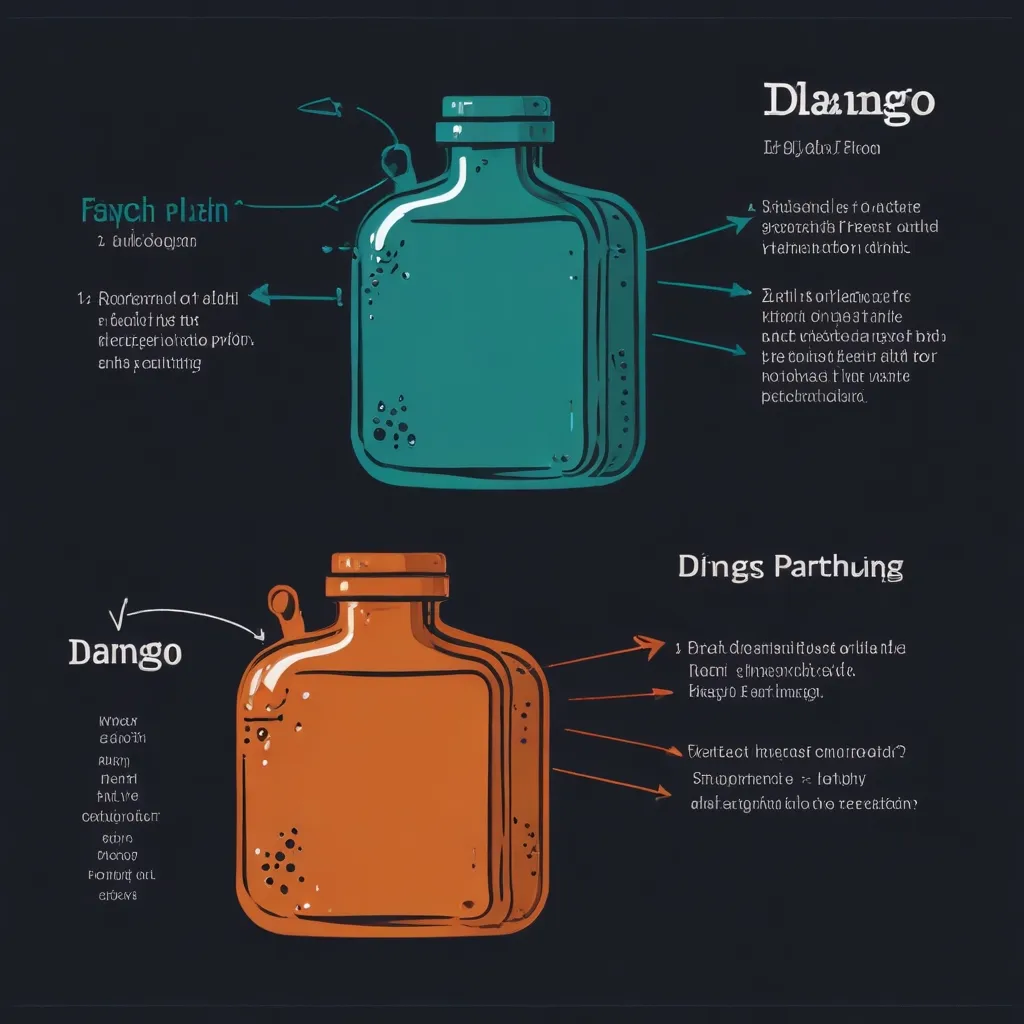When it comes to Python web development, these two frameworks often steal the spotlight: Flask and Django. Each with its own set of strengths, weaknesses, and quirks, determining the best fit for your project involves a bit of a deep dive. Let’s flesh out the core ideas and help you navigate the choice between these two popular frameworks.
Meet Flask and Django
Flask is the sleek, lightweight, minimalist framework that screams flexibility and simplicity. Crafted by Armin Ronacher in 2011, it’s the best pal for small to medium-sized web applications. It lets you build stuff from scratch without stuffing your project with unnecessary baggage. Think of it as the canvas for your masterpiece, offering a playground for lots of customization and tinkering.
Enter Django—the heavyweight champion of full-stack frameworks. It’s often called the “batteries-included” option because it packs a robust set of built-in tools and libraries, fast-tracking your development process. Created with complex web applications in mind, Django is your go-to for projects demanding serious security, killer authentication, and an admin interface right out of the box.
Development Speed and Complexity
If you’re racing against time, Django might be your knight in shining armor. With its fully-loaded set of features—ORM system, authentication modules, and the works—you can whip up sophisticated applications lickety-split. So, when deadlines are looming and requirements are layered, Django’s pre-configured environment can be a lifesaver.
On the flip side, Flask shines brightest in the world of rapid prototyping. It’s the scrappy underdog perfect for MVPs (Minimum Viable Products) or proof-of-concept apps. Flask’s lean structure ensures your barebones prototype sees the light of day in record time, though for large-scale projects, it might not match Django’s swiftness.
Flexibility and Customization
Now, Flask offers the kind of flexibility that dreams are made of. It lets you handpick your tools and decide how you want to build your app, sort of like a LEGO set with endless possibilities. However, with great power comes great responsibility—you’ll need to handle more nitty-gritty details like authentication and database operations on your own.
Django stands on the more opinionated side of the spectrum. You’ll find a clear-cut, structured approach to building your apps, which can be a blessing or a curse. This framework makes it easy to maintain consistency and readability across your application, but be aware, it could also limit your creative scope when it comes to structure.
Performance
When it boils down to performance, Flask might snag the title by a slim margin owing to its lighter framework. But don’t fret too much about this difference; both can be fine-tuned and optimized to suit specific cases. It’s more about how you implement them and less about the framework’s inherent capabilities.
Use Cases
For tasks like creating dynamic news websites, social media platforms, or bustling e-commerce hubs, Django is the superstar. Its suite of built-in features and beefy structure ensures these complex web apps are not only feasible but manageable.
Flask, with its keep-it-simple approach, excels in crafting smaller web applications, microservices, or highly tailored projects. Beginners who want to dip their toes into the pool of web development often find Flask a great starting point due to its straightforward approach without the full-stack complexity.
Learning Curve
Flask has a pretty gentle learning curve. Its minimalist layout means you can get up and running quickly, making it especially friendly for beginners. But as your project grows and gains complexity, you might find Django’s thorough documentation and thriving community support a blessing in disguise.
Example Code
Let’s pull back the curtain on how you’d get a “Hello, World!” app up and running in both Flask and Django.
Flask Example
Take a quick dive into a basic Flask app with the code snippet below:
from flask import Flask
app = Flask(__name__)
@app.route('/')
def hello_world():
return 'Hello, World'
if __name__ == '__main__':
app.run()
Easy peasy! It sets up a basic app with a single route that just sends back “Hello, World!” when you hit the home page.
Django Example
Django demands a bit more setup, reflecting its ‘all-inclusive’ character. Here’s a quick rundown:
- Install Django:
pip install django - Create a new Project:
django-admin startproject hello_world - Create a new App:
python manage.py startapp hello - Define the View:
# hello/views.py from django.http import HttpResponse def hello_world(request): return HttpResponse('Hello, World!') - Map the URL:
# hello/urls.py from django.urls import path from . import views urlpatterns = [ path('', views.hello_world, name='hello_world'), ] - Include the URL in the Main Project:
# hello_world/urls.py from django.contrib import admin from django.urls import include, path urlpatterns = [ path('admin/', admin.site.urls), path('', include('hello.urls')), ] - Run the Server:
python manage.py runserver
This might seem a tad convoluted compared to Flask, but it lays down a solid foundation for larger, more complex applications.
Wrapping It Up
Deciding between Flask and Django ultimately swings on the specific needs of your project. Flask is the gem for small to medium-sized ventures where customization and rapid prototypes reign supreme. Conversely, if you’re tackling a multifaceted project with tight schedules and intricate needs, Django steps up to the plate with its comprehensive, built-in advantages.
Both frameworks are titans in the Python ecosystem. Knowing their strengths and weaknesses helps in aligning better with your goal. Whether you’re just starting or you’re a seasoned developer, mastering these frameworks will undoubtedly give your web development skills a robust edge. So go on, pick your player and start building something amazing!






